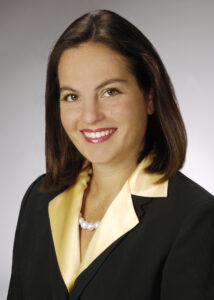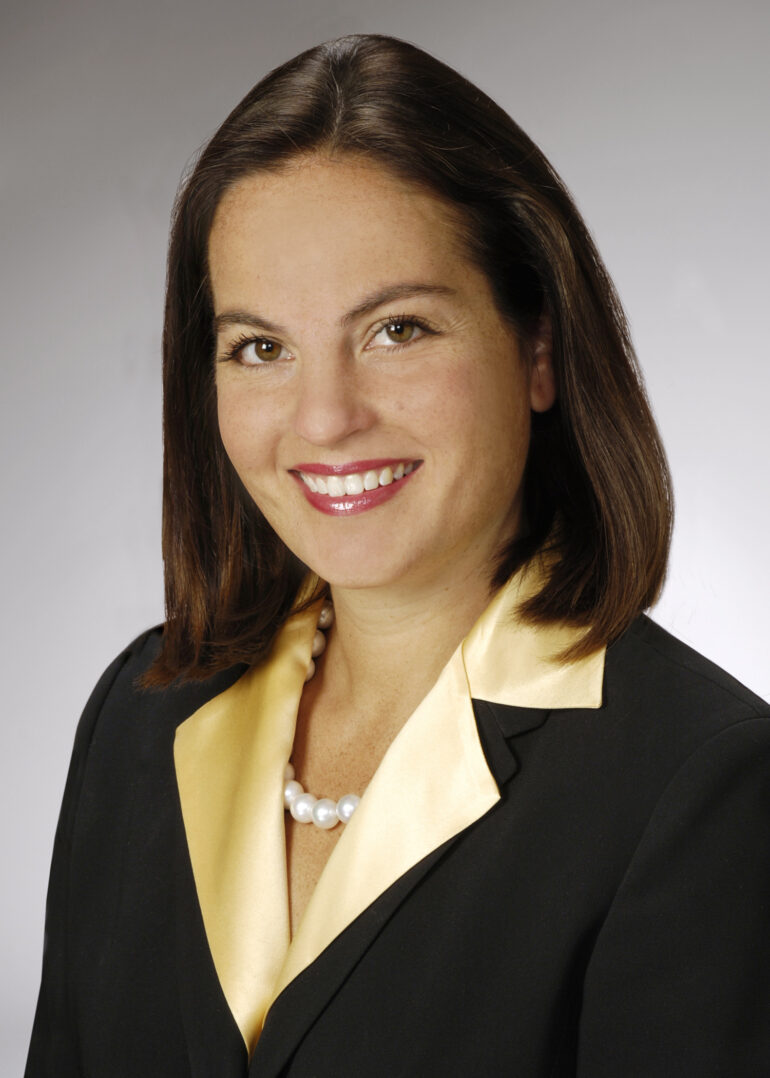On a typical day, Catherine Zinn sits in on a lot of meetings. She meets with existing clients, new clients, firm executives, and partners. After a full day of meetings, she represents the firm at networking events and seeks to identify prospects. Sounds like just another ho-hum day in the life of a client development professional at any law firm—or not. You see, Catherine is the Senior Client Development Executive at DLA Piper, the largest law firm on the globe, and she doesn’t just attend meetings, she “owns” many of them. More importantly, the results of these meetings are tangible, for example, contributing in part to an overall 11% increase in revenue in 2011.

When Catherine agreed to meet with me this week, over the phone, in advance of her session at the upcoming Legal Sales and Services Association (LSSO) RainDance 2012 Conference, we talked about what makes the DLA Piper sales team top performers and how her meetings are a genuine catalyst in driving firm revenue.
“In every corner you can point to at least one win that never would’ve happened, but for the sales team. The partners and leadership know this and we are very well regarded.”
(Talk about job security! Wow!)
Sales Professionals Are Integrated Throughout the Firm
Formal sales departments are still relatively new for law firms, and non-existent in most. Perhaps even stranger is the fact that many lawyers are still reluctant to allow client development executives to interact with their clients! I asked Catherine about that.
“Though not always the case at many law firms, at DLA Piper, we speak directly with clients and work with prospects. A key ingredient to our success is that our sales executives have a seat at every table.”
She explained that the sales professionals are also not under-valued in internal meetings.
Our sales executives are not order fillers or the de facto scribe at internal executive meetings. The firm does not view the world as us and them (SIC) lawyers and non-lawyers. Everyone is given permission to achieve on their merits alone.
(Yes, Virginia, even a “non-lawyer” has real value to contribute!)
“We are integrated with every pillar in the firm; practice leaders, clients, accounting, research, the library, marketing, management, etc. In many cases, we drive the meetings. We develop the agenda, bring up the difficult issues, and we make the judgment calls.”
Whether internally among partners or externally among clients and prospects, Catherine explained that her charge is to keep her proverbial finger-on-the-pulse to insure a healthy environment in which to drive revenues.
The Recipe
Catherine suggests that there are four primary components to a strong client development program (the ingredients of the secret sauce):
- Direct relationships with the top.
- Regular meetings with current, and new, clients.
- Internal collaboration.
- Lead generation events.
No surprises in this list. Many an excellent law firm gives some degree of lip service to all four components, however, as Catherine pointed out, and I agree, it’s the execution of those steps that will make the difference.
On Direct Relationships with the Top:
“The effectiveness of the sales team is dependent upon respect and inclusion from the top down. The global CEO of our firm loves what our sales team does. We communicate frequently. We are folded into the management team, not by a mandate or organizational chart, but because we deliver results.”
On Meeting With Current Clients:
“I’m focused, fairly exclusively, on general counsel relationships. I am 100% sales and business development, meaning 50 percent of my time is spent selling to prospects, typically general counsel of Fortune 500 companies, and 50 percent meeting with current clients, again typically general counsel, to talk about how the relationship is working.”
She told me that in these meetings she tries to uncover what’s working and what’s not in order to improve services, or, as only a sales person can expect, expand the relationship to provide additional services that make sense for the client and the firm.
She explained that client relationships aren’t on the entitlement plan—relationships are earned. You can’t build a loyal relationship with a client if you’re not connecting frequently and executing on your word. The sales team fills an important co-role in client service delivery.
On Meeting With New Clients:
“Every new client gets attention from our sales team. First, I sit down and do a needs assessment. I try to learn what’s going on in their company, their preferences, challenges, what’s working with other outside counsel relationships, or not, and generally to see if anything pops. Then, together we create a planned program for their account. We follow through, follow up, reassess, revise, and make sure we are exceeding expectations.”
How comforting for a new client to know they have an ombudsman of sorts that they can contact for a service issue without be charged by the hour for an attorney’s time. After all, it’s what happens after-the-sale that makes the difference between an indifferent client and a loyal client, right?
On Internal Collaboration:
Driving the internal pipeline is critical to the sales professional’s success at DLA Piper.
“It is nearly impossible to create internal collaboration and cross selling within sectors without knowing what your colleagues have been doing to move things forward.”
Catherine leads a face-to-face, weekly regional meeting with their corporate department partners, who are typically viewed as the client relationship partner.
“I sit down with about 20 partners every week to discuss the pipeline. We use this meeting to make our colleagues generally aware of what we’ve been doing. We each report on any client meetings that we had that week, update each other on where we are with prospects, and generally hold one another accountable.
“The sales process is dependent upon internal coordination and these meetings are a key component.
“And, when the sales professional ‘owns’ the meeting, they stay on it and manage the bejesus out if it. Energy and execution is my focus, and when you ride others to do the same, sales happen.”
On lead generation:
“If I’m not attending a general networking type of event such as the Silicon Valley Association of Corporate Directors, I may have helped plan an event, placed the speakers, brought in a VIP group of clients, or have driven the attendance at the event to insure that just the right people are involved. In all cases, I am both representing the firm and mining for opportunities.”
It’s hard work and it’s working.
DLA Piper saw an 11% increase in revenue last year, according to Catherine.
And, while she admitted that not all of it can be attributed to the efforts of the sales teams (the firm has an active strategy in acquiring lateral talent), there’s little doubt from anyone that the client development team is earning their keep.
Catherine emphasized that not one size fits all. She gives credit to the firm leaders who approach the business of law with an entrepreneurial philosophy.
What is working for DLA Piper may not work in another firm, but it is definitely a starting point for brainstorming where legal services sales teams are concerned.
That’s why she plans to make her session at RainDance 2012 highly interactive. Using a white board to record attendees’ ideas, she will guide the group through what no doubt will be a very lively discussion. I’ll follow up with Catherine after the conference to report on the VMO blog about the outcome of the session.
About RainDance 2012
It’s in Chicago, June 5-6. It’s the only focused event of its kind, designed to educate law firms in addressing sales and service challenges. Follow on Twitter @LSSO_org
(Disclaimer: I have been given a press pass to access the sessions in exchange for reporting at the event, here on the VMO blog.)






Fantastic article! Thank you Catherine for sharing your important (and impactful) work!